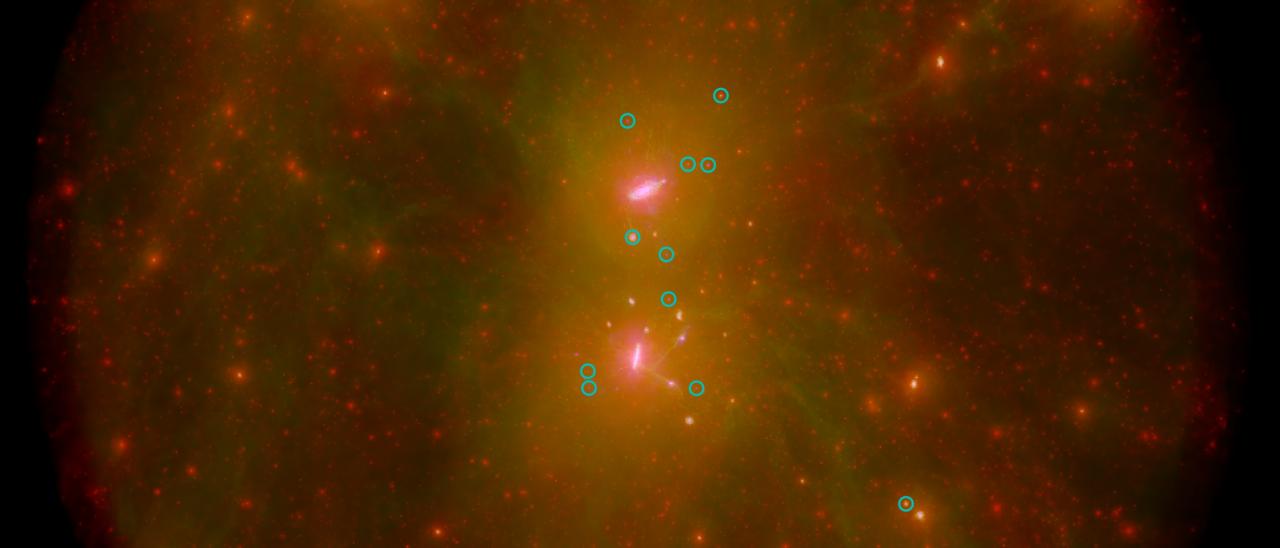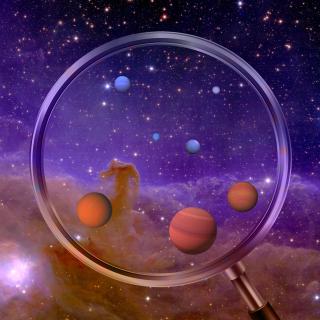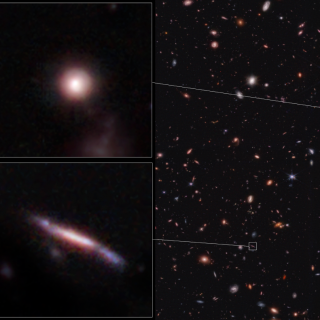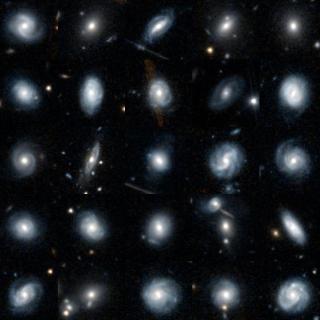A numerical simulation of the local group of galaxies, from the HESTIA project. The dark matter distribution is shown in red, the gas in green, and the stars that make up the galaxies in white. The two central galaxies correspond to our Milky Way and Andromeda, while ultra-diffuse galaxies that have not yet been discovered are indicated by green circles.
Credits: Salvador Cardona-Barrero
An international team led by researchers based in Poland, Spain, and Germany, has predicted the probable existence of a large number of ultradiffuse galaxies in the Local Group which still have not been observed. These galaxies would have masses of up to a thousand million solar masses, spread out over an area comparable to the size of the Milky Way, which is a thousand times more massive. This would make them very faint and difficult to observe, which is why they have not been seen until now. Only af ew have been found in the Local Group, and the question has been raised of how many could be present in our cosmic neighbouhood. A good measurement of the number of these galaxies would respond to a firm prediction of current models of the Universe.
The scientists in this international team examined the most advanced simulations of the Local Group using a programme termded HESTIA (which refers to the ancient greek godess of the hearth). These simulations are the most accurate and detailed which exist of the Milky Way and its immediate surroundings, and have permitted the prediction of the existence of up to 12 ultra-diffuse galaxies in the Local Group, several of which could be directly observed with the existing data of surveys such as the Sloan Digital Sky Survey.
The group of researchers comprises Dr. Oliver Newton, of the Center for Theoretical Physics of the Polish Academy of Sciences, Dr. Arianna de Cintio, a researcher at the ULL and the IAC, with Junior Leader financing from the La Caixa Foundation; Dr. Salvador Cardona-Barreiro, of the IAC and ULL, and Dr. Noam Lliebeskind of the Institute of Astrophysics of Potsdam (IAP).
According to Arianna Di Cintio, "the discovery of new ultra-diffuse galaxies is likely to be of great value in the discussion of theories of galaxy formation and evolution, and may even provide fundamental insights into models of the Universe".
The research, with the title “The undiscovered ultra-diffuse galaxies of the Local Group” is published today in the specialised journal “Astrophysical Journal Letters”.
Article: "The undiscovered ultra-diffuse galaxies of the Local Group". DOI: https://doi.org/10.3847/2041-8213/acc2bb
Contact at the IAC: Dr Arianna Di Cintio, adicintio [at] iac.es (adicintio[at]iac[dot]es)



